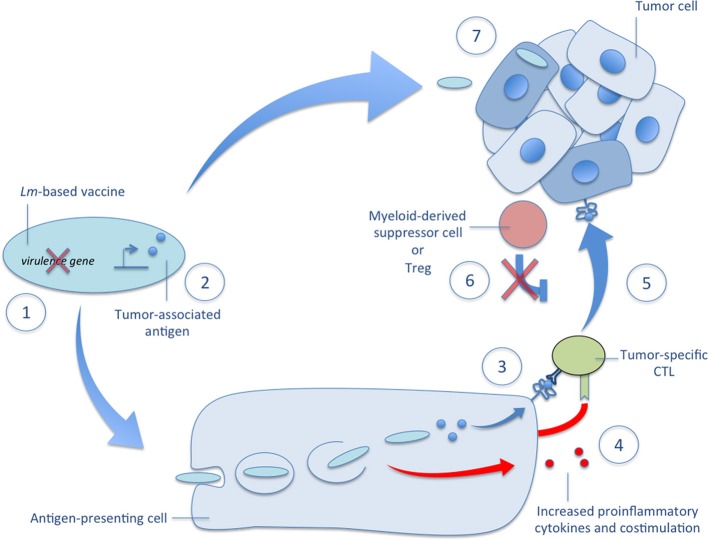Figure 2.
Mechanisms of Lm-based vectors in tumor immunotherapy. Several mechanisms governing the efficacy of Lm-based immunotherapies are depicted in the accompanying figure. (1) There are several very effective methods of attenuation available to construct a highly immunogenic Lm-based vector usually involving deletion of one or more virulence genes. (2) Once attenuated, Lm-based vectors are highly versatile producers of tumor-associated antigens and other therapeutic proteins. (3) After administration, Lm-based vaccines selectively infect antigen-presenting cells, escape the phagosome, and secrete tumor-associated antigens that are delivered to a high-efficiency processing and presentation pathway for activation of tumor-specific CTLs. (4) The detection of Lm-derived PAMPs facilitates tumor-specific CTL activation through the upregulation of costimulatory molecules and the secretion of proinflammatory cytokines. (5) The resultant effect of Lm-based vaccination is the ability to break central tolerance and produce therapeutic anti-tumor CTL responses against self TAAs. (6) This tumor-specific CTL response is further aided by reduced tumor-associated immunosuppression as evidenced by diminished functionality and lower numbers of Tregs and MDSCs in the tumor microenvironment after Lm-based vaccination. (7) In addition to activation of tumor-specific CTL responses, recent reports demonstrate the ability of Lm-based vaccines to target primary and metastatic tumors for infection and directly kill tumor cells. Each of these mechanisms of Lm-based vaccines highlight their powerful potential as vectors for tumor immunotherapy and their versatility in terms of construction and efficacy.

